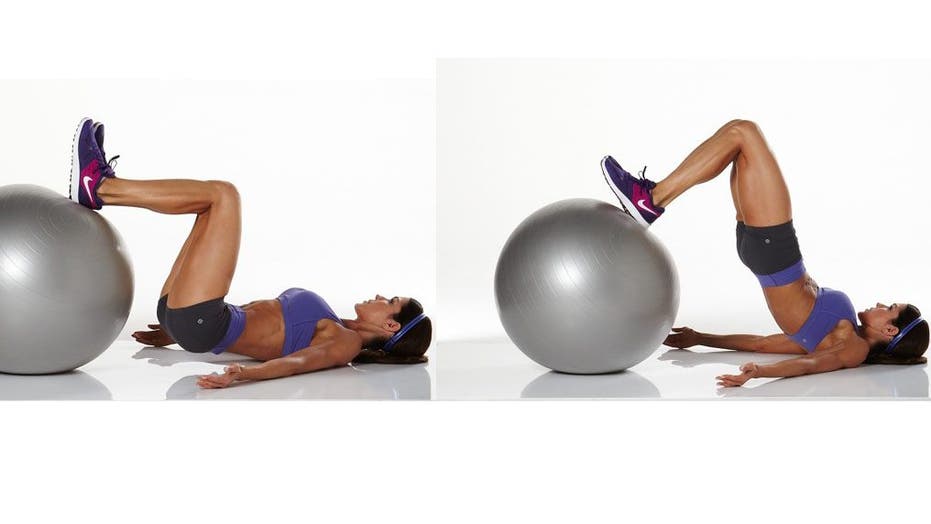I remember my father teaching me how to ride a bike, but I don’t remember anyone teaching me how to run. Many of us assume running is as natural as walking.
Even though you know how to lace your fancy running shoes, work the controls on the treadmill or know the benefits of running against traffic, you might not know the best way to actually run.
Running is a lifelong learning process, says Bruce Wilk, P.T., O.C.S., Director of Orthopedic Rehabilitation Specialists. He says one is ready to run “when you have the proper foot wear, you’ve established a fitness walking base, you are able to hop and you’re not taking medication for pain or inflammation.”
Working the core: way beyond the six pack
Wilk knows a lot about running. He’s completed four Ironman races and is currently training for his 27th marathon. He believes that running depends a lot on balance and flexibility.
Other experts agree that balance is one of the most important components to master when developing running skills, in particular core strength. Michael Fredericson, MD, Professor and Director, PM&R Sports Medicine Team Physician Stanford Athletics, says, “The core is compromised of 29 pairs of muscles that support the lumbo-pelvic-hip complex. It allows you to control your posture and to better distribute the impact forces to your body.”
Becoming a good runner is a lot more complicated than just downloading a training program. As Fredericson points out, “Specific exercises for runners should progress from mobility to stability, to reflexive motor patterns, and finally, to progressive strengthening.”
He recommends that the first stage of core stability training should begin with the runner learning to stabilize the abdominal wall. Some of the fundamental lumbo-pelvic stability exercises that Fredericson suggests are bridging, plank, and side plank. “Once good stability with all static core exercises have been achieved, you can move to more advanced exercises on the Physioball such as spinal flexion and leg curls on the physioball, among others.”
Once you have strengthened the core, you can progress to moves that work on balance and motor control like single-leg balance and forward and backward rocking. “Functional movements that require acceleration, deceleration and dynamic stabilization should be included,” says Fredericson. This is where multi-directional lunges and standing pulley come in to play.
Your best foot strike
So you now know about balance’s role. What about the foot strike? Running is about propelling your body forward. Both feet are never on the ground at the same time. Is there really one ideal type of foot strike?
“It’s individual. You can’t say that there is a correct foot strike for everyone,” says Fredericson.
So there’s no one-foot-strike fits all. Chances are that you’ve come across with terms mid-foot, heel and flat-foot strike. Wilk breaks down the terminology:
“The term mid-foot striking is new to running, but the concept has been known as flat foot striking for quite some time. A flat-foot strike is when your foot hits the ground in a position that your ankle is neither flexed up or down. When the ankle is flexed upward a runner will heel strike. On a downward strike, the runner strikes on their forefoot. One can heel strike, mid-foot or forefoot strike in any running shoe or no shoe at all. You are in control of how you position your ankle for your foot to strike the ground,” says Wilk.
Shoe savvy
The type of shoe won’t automatically make you a better runner, but both experts advise that a proper shoe will help you achieve the best potential of your abilities. Fredericson warns that the shoe type selection should be based on your foot type and how much stress your body can handle.
And if you’re tempted to follow the trend to buy the newest minimalistic-barefoot type of shoes, be careful. Rudy Dressendorfer, P.T., Ph.D., FACSM, says, “Regardless of foot type, the addition of cushioning material to shoes does help attenuate foot strike. For example, marathon runners who wore midsole-cushioned shoes during over-distance training showed less running-related breakdown of red blood cells, which may occur in the feet, than runners whose shoes provided minimal support.”
Fredericson recommends a couple of times a week, at the end of the workouts to go out in the grass and do some barefoot strides or go walk on the beach. Just do something to keep the foot muscles strong, he says.
A Strength and Flexibility Workout
Finally, don’t make the most common mistake that all runners seem to make: doing too much, too soon.
Three must-do moves
Following Fredericson’s guidelines on how to get the most out of your core for running improvement, the exercises below will focus on lumbo-pelvic stability and dynamic stability; and functional strength training. In addition, he emphasizes the importance to do push-ups as an exercise to aid stabilizing the scapula and the upper body stabilizer since they tend to get fatigued and thus throw off proper body alignment.
Perform these exercises three times a week, alternating the days. Perform as many reps you can for 1 minute before moving to the next exercise. Repeat the circuit twice. If holding a position for a minute initially is too difficult, begin by doing 2 sets of 15 to 20 reps
If counting by the minute seems too hard at the beginning, try to do 2 sets of 15-20 reps.
Marta Montenegro is an exercise physiologist, certified strength and conditioning coach and master trainer, who teaches as an adjunct professor at Florida International University. Marta has developed her own system of exercises used by professional athletes. Her personal website, martamontenegro.com, combines fitness, nutrition and health tips, exercise routines, recipes and the latest news to help you change your life but not your lifestyle. She was the founder of nationally awarded SOBeFiT magazine and the fitness DVD series Montenegro Method.
Follow us on twitter.com/foxnewslatino
Like us at facebook.com/foxnewslatino

